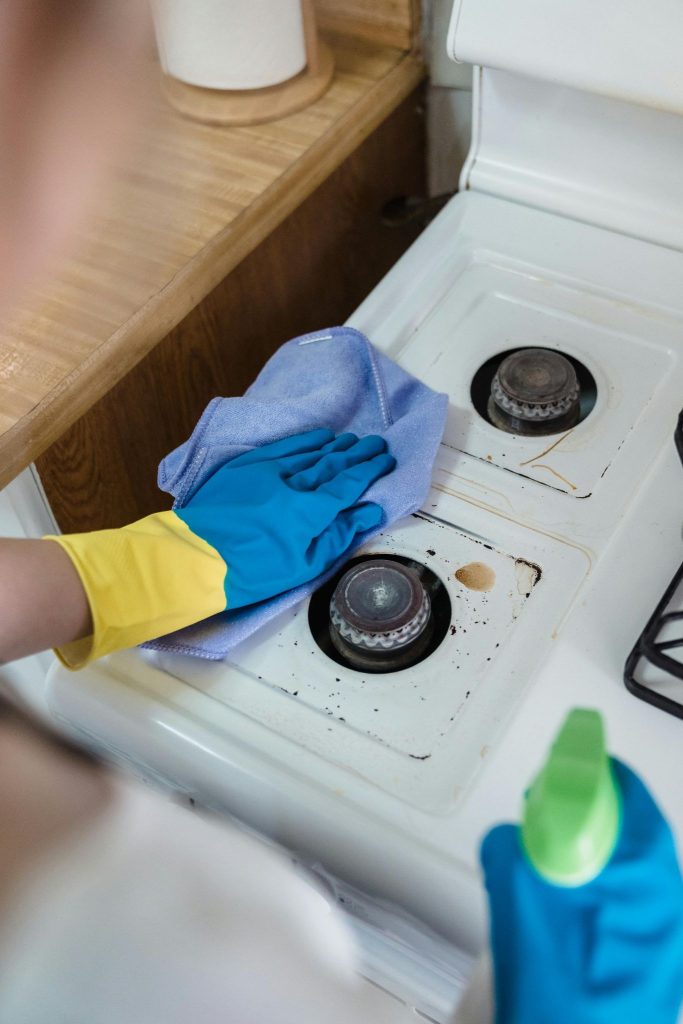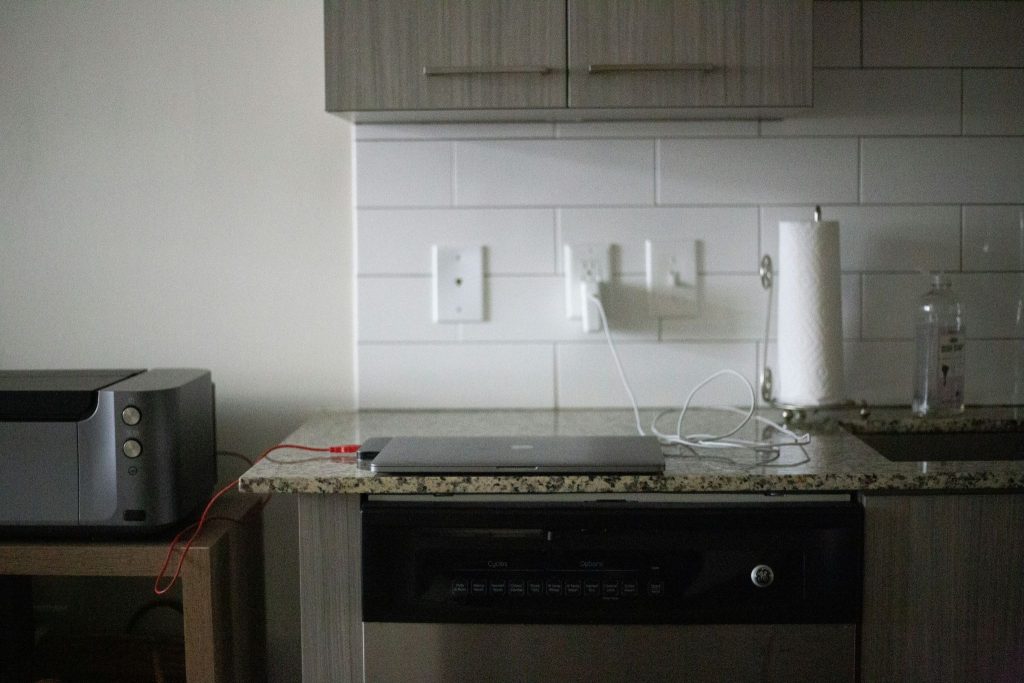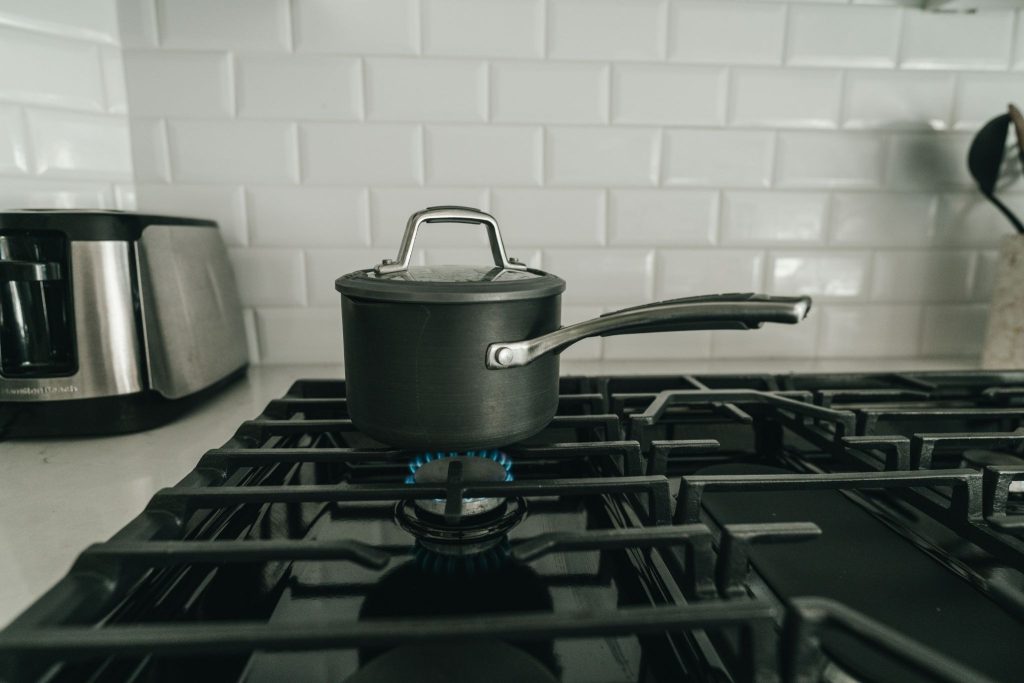
A glass stove top is sleek, modern, and adds elegance to any kitchen. But keeping it spotless? That’s a whole different story. Burnt-on grease, spills, and stubborn food stains can quickly dull its shine and even cause permanent marks if not cleaned properly.
The good news is — with the right cleaning method and tools, you can restore your glass stove top’s glossy finish and make it look brand new every time.
In this detailed guide, we’ll cover the best ways to clean a glass stove top, recommended cleaning products, tools, pros and cons of different methods, and expert tips to avoid scratches or streaks.
Table: Comparison of the Best Cleaning Methods for Glass Stove Tops

| Cleaning Method | Best For | Difficulty | Key Tools | Effectiveness | Safety for Glass |
| Baking Soda + Vinegar | Everyday stains | Easy | Baking soda, vinegar, soft cloth | ⭐⭐⭐⭐ | ✅ Excellent |
| Commercial Glass Stove Cleaner | Heavy grease, burnt residue | Medium | Branded cleaner, microfiber | ⭐⭐⭐⭐⭐ | ✅ Excellent |
| Razor Scraper Method | Hardened burnt spots | Medium–Hard | Razor scraper, gloves | ⭐⭐⭐⭐ | ⚠️ Use Carefully |
| Dish Soap & Warm Water | Light daily cleaning | Easy | Dish soap, sponge | ⭐⭐⭐ | ✅ Safe |
| Magic Eraser / Non-Abrasive Pads | Water marks, light grease | Easy | Eraser sponge | ⭐⭐⭐⭐ | ✅ Safe |
1. Baking Soda and Vinegar Method (DIY Natural Cleaner)

Features:
- Uses natural, non-toxic ingredients
- Gentle yet effective on grease and stains
- Safe for daily use
How to Use:
- Sprinkle baking soda over the cool glass top.
- Spray white vinegar evenly over the surface.
- Let it fizz for 10–15 minutes.
- Wipe clean using a soft microfiber cloth.
- Buff dry with a paper towel.
Advantages:
- Eco-friendly and chemical-free
- Inexpensive
- Great for mild to moderate stains
Pros:
Safe for all glass surfaces
Leaves no residue
Budget-friendly
Cons:
Not powerful enough for burnt-on food
May need multiple applications
2. Commercial Glass Stove Top Cleaners
Features:
- Specifically designed for glass and ceramic surfaces
- Removes tough, burnt-on grease and discoloration
- Leaves a streak-free shine
How to Use:
- Apply a small amount of cleaner to the cooled surface.
- Spread using a soft cloth or sponge.
- Gently scrub circularly until stains lift.
- Wipe clean and polish with a microfiber cloth.
Popular Brands:
- Weiman Glass Cooktop Cleaner
- Cerama Bryte
- Affresh Cooktop Cleaner
Advantages:
- Fast and effective cleaning
- Leaves protective coating
- Designed to prevent scratches
Pros:
Removes heavy stains easily
Adds long-lasting shine
Convenient and time-saving
Cons:
Costs more than DIY methods
Some products contain mild chemicals
3. Razor Blade Scraper Method (For Tough, Burnt Residue)
Features:
- Removes hardened spills and carbon buildup
- Requires precision and care
- Used only for cooled surfaces
How to Use:
- Make sure the stove is completely cool.
- Apply a bit of cleaner or vinegar to soften residue.
- Hold a razor scraper at a 45° angle.
- Gently scrape off burnt food in small sections.
- Wipe clean and polish afterward.
Advantages:
- Extremely effective for burnt spots
- Restores smoothness and clarity
- Removes deep-set grime
Pros:
Great for stubborn residue
Works quickly
Professional-level results
Cons:
Risk of scratching if not careful
Requires protective gloves and patience
4. Dish Soap and Warm Water
Features:
- Simplest and safest daily cleaning method
- Ideal for light stains and maintenance
- No special products required
How to Use:
- Mix warm water with a few drops of dish soap.
- Soak a soft sponge and wipe the surface.
- Rinse and dry with a clean cloth.
Advantages:
- Gentle on glass
- Quick and effortless
- Perfect for everyday cleaning
Pros:
Safe for all stove types
Inexpensive
Fast and easy
Cons:
Ineffective on burnt or sticky residue
Needs frequent repetition for greasy buildup
5. Magic Eraser or Non-Abrasive Pad
Features:
- Removes water spots and fingerprints
- Great for light grease and polish touch-ups
- Non-scratching surface
How to Use:
- Slightly dampen the magic eraser.
- Rub gently on glass in a circular motion.
- Wipe clean and buff dry.
Advantages:
- Easy to use
- Leaves glass shiny and smooth
- Works without chemicals
Pros:
Gentle but effective
No harsh odor or residue
Perfect for quick cleaning
Cons:
Not ideal for large burnt spots
Can wear down quickly with heavy use
Comparison Summary
| Method | Ease of Use | Cost | Effectiveness | Risk of Scratches | Ideal Frequency |
| Baking Soda + Vinegar | Easy | Low | High | Very Low | Weekly |
| Commercial Cleaner | Medium | Medium | Very High | Low | Weekly |
| Razor Scraper | Hard | Low | Very High | Moderate | Monthly |
| Dish Soap | Easy | Low | Medium | None | Daily |
| Magic Eraser | Easy | Medium | High | Very Low | As Needed |
Tips for Keeping Your Glass Stove Top Clean Longer
- Wipe after every use: Prevents buildup of grease and spills.
- Avoid abrasive cleaners: Never use steel wool or harsh scrubbing pads.
- Clean when cool: Always let the glass surface cool before cleaning.
- Use minimal liquid: Excess moisture can seep into electric components.
- Polish regularly: A soft microfiber cloth gives a beautiful shine.
Advantages of Cleaning Your Glass Stove Top Properly
- Prevents scratches and discoloration
- Improves heat efficiency and cooking performance
- Enhances kitchen aesthetics
- Extends the life of your cooktop
- Removes bacteria and odors
Disadvantages of Neglecting Your Glass Stove Top
- Permanent stains and marks
- Reduced heating efficiency
- Increased risk of scratches
- Harder to clean over time
- Loss of shine and clarity
Best Tools for Glass Stove Top Cleaning
| Tool | Purpose | Example |
| Microfiber Cloth | Wiping and polishing | Amazon Basics, Zwipes |
| Razor Scraper | Removing burnt food | Cerama Bryte Razor |
| Sponge/Soft Pad | Gentle cleaning | Scotch-Brite Non-Scratch |
| Spray Bottle | Applying vinegar or cleaner | Any reusable spray bottle |
| Heat-Resistant Mat | Protection while cleaning | OXO Silicone Mat |
FAQ: Best Way to Clean Glass Stove Top
Q1. How often should I clean my glass stove top?
A: Wipe after every cooking session and do a deep clean weekly for the best results.
Q2. Can I use Windex or regular glass cleaner?
A: It’s not recommended, as ammonia-based cleaners can leave streaks or dull the glass.
Q3. What should I avoid when cleaning a glass stove?
A: Avoid abrasive pads, steel wool, or cleaners with harsh chemicals.
Q4. How do I remove burnt sugar or caramel spills?
A: Use the razor scraper method after applying a commercial cleaner or vinegar soak.
Q5. Why does my glass stove top look cloudy after cleaning?
A: Residue from soap or cleaner can cause haze; buff with a dry microfiber cloth to restore shine.
Final Thoughts: The Best Way to Clean a Glass Stove Top
A sparkling glass stove top doesn’t require hours of scrubbing or expensive cleaners — just consistency and the right method.
For most homes:
- Best Overall Method: Baking Soda + Vinegar for natural, everyday cleaning
- Best for Heavy Stains: Commercial Glass Cleaner or Razor Scraper
- Best for Quick Touch-Ups: Magic Eraser or Dish Soap
Clean your glass stove regularly, use gentle tools, and protect its surface — and your kitchen will always look pristine.
